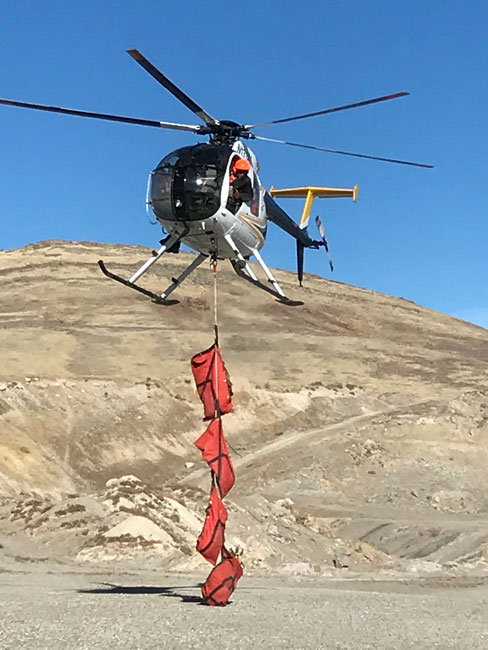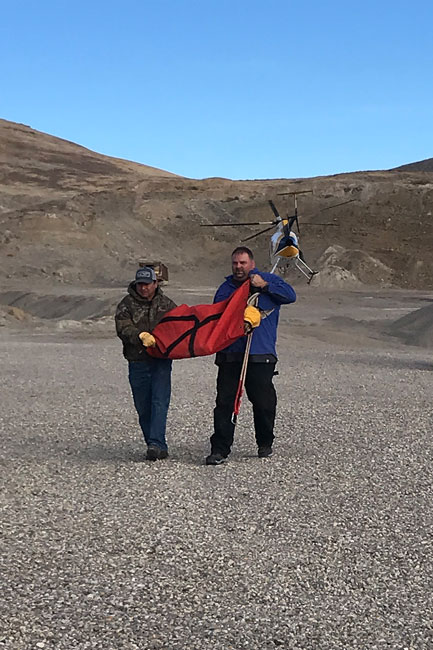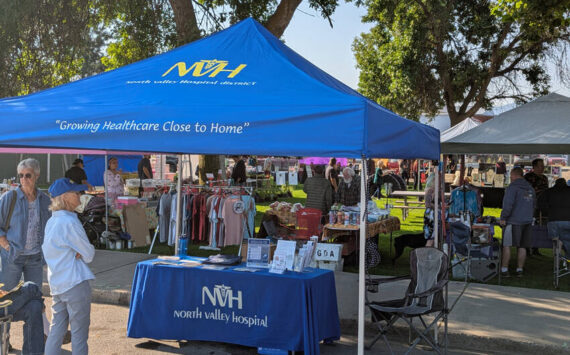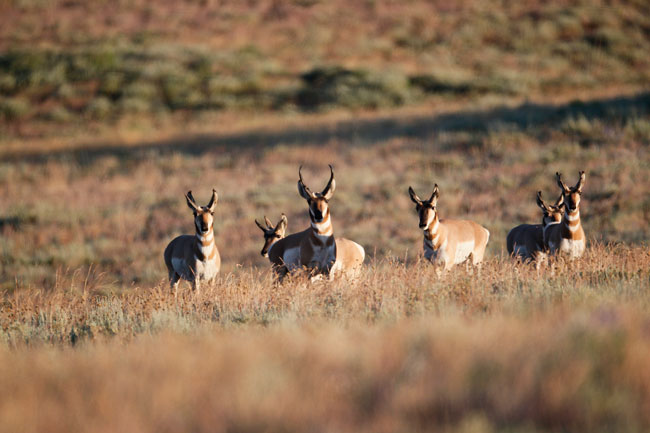
Twelve male and 87 female pronghorn antelope captured from several populations near Elko, Nevada were released on the Colville Indian Reservation recently. The Colville Tribes’ Fish and Wildlife (CTFW) Department worked with the Nevada Department of Wildlife (NDOW) to coordinate efforts that included helicopter captures.
NESPELEM – Ninety-eight pronghorn antelope were released on the Colville Indian Reservation recently; this is the second transplant operation since January 2016. The Colville Tribes’ Fish and Wildlife (CTFW) Department worked with the Nevada Department of Wildlife (NDOW) to coordinate efforts that included helicopter captures from several antelope populations near Elko, Nevada.
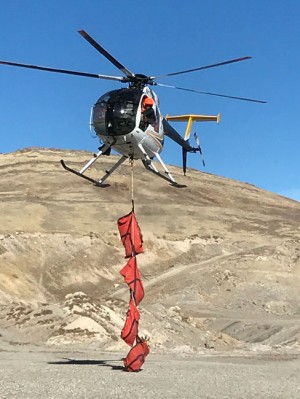
About 50 people were brought together in Elko for the operation. The team consisted of a helicopter capture crew, veterinarians from Omaha Zoo, NDOW and Utah Department of Natural Resources, wildlife biologists and technicians, and volunteer youth workers from NDOW.
“We captured 12 males and 87 females from Nevada,” said Eric Krausz, wildlife biologist for CTFW. “The total composition included 26 fawns, 20 yearlings, and 53 female adults. We lost one female antelope due to injury.”
He added, “We collared 50 adult female antelope with GPS/VHF collars. The collars will track their locations approximately every 12 hours, detect mortalities after 24 hours of inactivity, and last for up to four years.”
Prior to the relocation effort, NDOW staff used a fixed wing reconnaissance flight and ground monitoring to locate antelope groups. Processing stations were set up to collect samples, give injections, apply collars or ear tags and load antelope into trailers.
“Our interest in targeting these animals was due to the loss of critical winter range caused by wildfires in Nevada during 2017,” said Cody McKee, big game biologist for NDOW. “Our objective was to reduce densities of pronghorn in these areas and allow for those being transported to Colville lands time to acclimate to their new environment before the arrival of winter. Since animal welfare is our primary priority, we scheduled the captures for October. The pronghorn had body temperatures and stress levels that were consistent with healthy transport. We are optimistic that the pronghorn that remain in Nevada will have less competition for food on degraded winter range.”
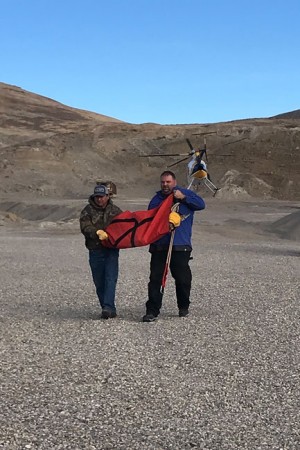
Rick Desautel, Game Management Specialist, right, and Kelly Singer Land and Mitigation Biologist.
About 50 people were brought together in Elko for the operation. The team consisted of a helicopter capture crew, veterinarians from Omaha Zoo, NDOW and Utah Department of Natural Resources, wildlife biologists and technicians, and volunteer youth workers from NDOW.
“We all had a great sense of what our individual roles were in the capture effort and what we could do to make the process run smoothly,” said Sam Rushing, wildlife biologist for CTFW. “The main factors that helped this capture to be more successful were the fact that there were multiple target populations and the ability to move quickly to different capture sites.”
“Once we arrived at a new capture location, we set up base camp and the helicopter would receive current antelope locations via radio from NDOW biologists scouting in the hills,” said Krausz. “The helicopter pilot and capture crew would then locate an antelope group and proceed to net gun an animal. Once an animal has been net gunned, a mugger from the helicopter capture team exits the helicopter to untangle the antelope from the net, apply blindfolds, apply hobbles on their legs, and place them in transport bags that were connected by a carabiner to the long line under the helicopter. Immediately after capture each antelope received an injection of a drug to help calm the animal.”
The pronghorn were transported in four horse trailers and were released on land that is managed for the benefit of wildlife and their habitats through funding by Bonneville Power Administration. Bureau of Indian Affairs funds were used for the capture efforts.
At this time, it is estimated that approximately 29,000 pronghorn exist in the state of Nevada, making them the second most common wild-ungulate in the state behind mule deer.
(Picture by Nevada Department of Wildlife)
